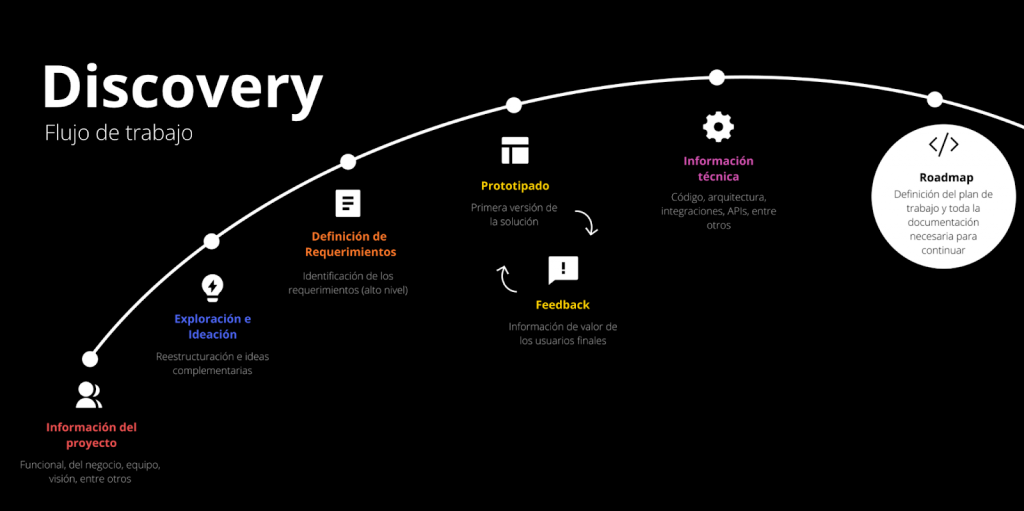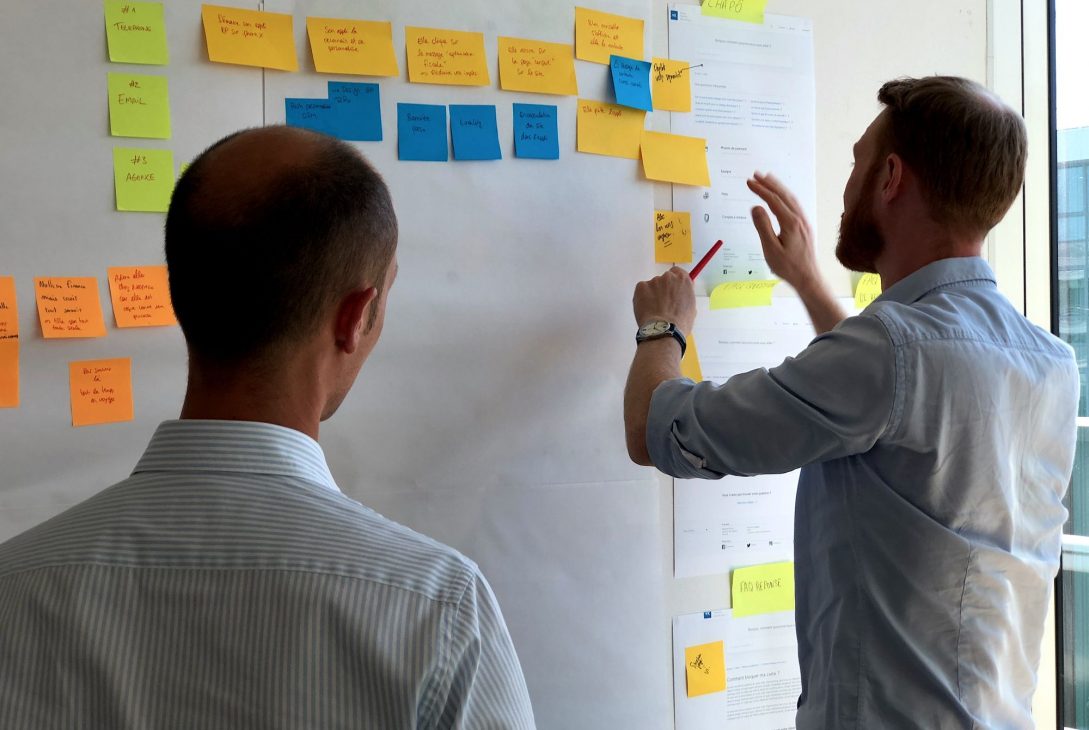Many times our clients contact us with a brilliant idea to develop an app or website but they are not sure where to start or what functionalities it could have; other times they go deeper, but as the meetings progress and new ideas arise, they want to rethink or optimize the initial plan and that is when we propose that before starting any type of development, the ideal would be to have a product discovery stage.
What is Product Discovery?
Product Discovery is the first stage of a project that allows us to identify solutions to the most relevant points of the product to be created, enhancing or rethinking various aspects of the main idea, but also obtaining direct feedback from the users to whom we are going. to lead; which offers continuous improvement, reduces risks, generates greater confidence and enhances the impact of the solution.
How does it work?
It is a process of continuous interaction with the client, through sessions or workshops of 3 to 4 days, where professionals from different specialties participate for research, ideation, evaluation of experience and design, which guarantees to have as a result a clear and sharing of the product to be developed. Once the workshops are finished, we create a high-level prototype to test it with end users.
This process helps programmers to have the precise scope no matter how complex the solution is, consequently, it helps us to launch the robust product on the market by truly focusing on the end user, without individual subjectivities or biases, which highlights the value of draft.
What are the stages?
During the workshops, which are carried out through the Miro collaborative work tool, we touch on different points to properly develop the discovery process and it has the following workflow:

To understand the stages a little more, I detail each one below:
PROJECT INFORMATION: It is the beginning of the process and allows the search for relevant aspects of the project, where information is collected on the business model, the product vision, as well as internal or external positioning strategies, lightning demos, among others.
EXPLORATION AND IDEATION: During this process, research is carried out to identify opportunities through the expertise of each member to generate ideas that increase the value of the project. Likewise, possible pain points are evaluated in similar solutions that are taken as a reference to evaluate and rule out similar situations. Activities such as:
- Impact Mapping
- Proto People
- User Journeys
At the end of this stage, the new ideas (or the restructuring of some existing ones) go through a voting process so that those that add more value are chosen.
DEFINITION OF REQUIREMENTS: During this stage, the ideas and proposals raised in the Exploration go through a process of identifying functional requirements, where the ideas are transformed into stories that are added to the backlog, being prioritized as indicated by the PO. The selected tasks go through the initial prototyping. Activities such as:
- User Story Mapping
PROTOTYPING: In this stage we build and validate the first version of the MVP. It allows us to test high-value ideas with the group of users it is aimed at. Although it may be a graphic sketch to align ideas, it will later be transformed into a high-fidelity prototype to be tested by end users who are selected according to the project’s target. This allows you to collect feedback to make improvements. Activities include creating:
- Mockup
- Prototypes
TECHNICAL INFORMATION: This stage will allow defining the architecture of the project, the software requirements as well as identifying the integrations that will be used and the type of technical documentation necessary to carry out the project is described. Activities include creating:
- ERS
- Software Architecture
- Language specification and UI libraries
- Data model proposal
- Data Dictionary
- API technical specifications
Once all the previous points are in place, the project can be dimensioned and a ROADMAP is carried out, which would be the work plan that will allow the development time to be determined, the team to be identified and the price to be estimated. the development of the project depending on the time required for the solution and the profiles involved.
Without a doubt, having a Product Discovery stage helps to have a clearer, more structured and precise vision of the product to be developed, or in other words, it allows us to assertively plan all the processes of the project we want to develop, because there is nothing more rewarding than have the certainty of having a software as we imagine it, or better.
#aplicaciones #desarrollodesoftware #development #evolbit #productdiscovery #software
Last modified: February 9, 2022

